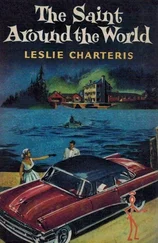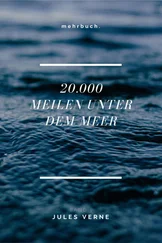Nevertheless, I’m well aware that the Nautilus is drawing near to populated shores, and if some chance for salvation becomes available to us, it would be sheer cruelty to sacrifice my companions to my passion for the unknown. I must go with them, perhaps even guide them. But will this opportunity ever arise? The human being, robbed of his free will, craves such an opportunity; but the scientist, forever inquisitive, dreads it.
That day, January 21, 1868, the chief officer went at noon to take the sun’s altitude. I climbed onto the platform, lit a cigar, and watched him at work. It seemed obvious to me that this man didn’t understand French, because I made several remarks in a loud voice that were bound to provoke him to some involuntary show of interest had he understood them; but he remained mute and emotionless.
While he took his sights with his sextant, one of the Nautilus’s sailors— that muscular man who had gone with us to Crespo Island during our first underwater excursion—came up to clean the glass panes of the beacon. I then examined the fittings of this mechanism, whose power was increased a hundredfold by biconvex lenses that were designed like those in a lighthouse and kept its rays productively focused. This electric lamp was so constructed as to yield its maximum illuminating power. In essence, its light was generated in a vacuum, insuring both its steadiness and intensity. Such a vacuum also reduced wear on the graphite points between which the luminous arc expanded. This was an important savings for Captain Nemo, who couldn’t easily renew them. But under these conditions, wear and tear were almost nonexistent.
When the Nautilus was ready to resume its underwater travels, I went below again to the lounge. The hatches closed once more, and our course was set due west.
We then plowed the waves of the Indian Ocean, vast liquid plains with an area of 550,000,000 hectares, whose waters are so transparent it makes you dizzy to lean over their surface. There the Nautilus generally drifted at a depth between 100 and 200 meters. It behaved in this way for some days. To anyone without my grand passion for the sea, these hours would surely have seemed long and monotonous; but my daily strolls on the platform where I was revived by the life-giving ocean air, the sights in the rich waters beyond the lounge windows, the books to be read in the library, and the composition of my memoirs, took up all my time and left me without a moment of weariness or boredom.
All in all, we enjoyed a highly satisfactory state of health. The diet on board agreed with us perfectly, and for my part, I could easily have gone without those changes of pace that Ned Land, in a spirit of protest, kept taxing his ingenuity to supply us. What’s more, in this constant temperature we didn’t even have to worry about catching colds. Besides, the ship had a good stock of the madrepore Dendrophylia, known in Provence by the name sea fennel, and a poultice made from the dissolved flesh of its polyps will furnish an excellent cough medicine.
For some days we saw a large number of aquatic birds with webbed feet, known as gulls or sea mews. Some were skillfully slain, and when cooked in a certain fashion, they make a very acceptable platter of water game. Among the great wind riders—carried over long distances from every shore and resting on the waves from their exhausting flights— I spotted some magnificent albatross, birds belonging to the Longipennes (long-winged) family, whose discordant calls sound like the braying of an ass. The Totipalmes (fully webbed) family was represented by swift frigate birds, nimbly catching fish at the surface, and by numerous tropic birds of the genus Phaeton, among others the red-tailed tropic bird, the size of a pigeon, its white plumage shaded with pink tints that contrasted with its dark-hued wings.
The Nautilus’s nets hauled up several types of sea turtle from the hawksbill genus with arching backs whose scales are highly prized. Diving easily, these reptiles can remain a good while underwater by closing the fleshy valves located at the external openings of their nasal passages. When they were captured, some hawksbills were still asleep inside their carapaces, a refuge from other marine animals. The flesh of these turtles was nothing memorable, but their eggs made an excellent feast.
As for fish, they always filled us with wonderment when, staring through the open panels, we could unveil the secrets of their aquatic lives. I noted several species I hadn’t previously been able to observe.
I’ll mention chiefly some trunkfish unique to the Red Sea, the sea of the East Indies, and that part of the ocean washing the coasts of equinoctial America. Like turtles, armadillos, sea urchins, and crustaceans, these fish are protected by armor plate that’s neither chalky nor stony but actual bone. Sometimes this armor takes the shape of a solid triangle, sometimes that of a solid quadrangle. Among the triangular type, I noticed some half a decimeter long, with brown tails, yellow fins, and wholesome, exquisitely tasty flesh; I even recommend that they be acclimatized to fresh water, a change, incidentally, that a number of saltwater fish can make with ease. I’ll also mention some quadrangular trunkfish topped by four large protuberances along the back; trunkfish sprinkled with white spots on the underside of the body, which make good house pets like certain birds; boxfish armed with stings formed by extensions of their bony crusts, and whose odd grunting has earned them the nickname “sea pigs”; then some trunkfish known as dromedaries, with tough, leathery flesh and big conical humps.
From the daily notes kept by Mr. Conseil, I also retrieve certain fish from the genus Tetradon unique to these seas: southern puffers with red backs and white chests distinguished by three lengthwise rows of filaments, and jugfish, seven inches long, decked out in the brightest colors. Then, as specimens of other genera, blowfish resembling a dark brown egg, furrowed with white bands, and lacking tails; globefish, genuine porcupines of the sea, armed with stings and able to inflate themselves until they look like a pin cushion bristling with needles; seahorses common to every ocean; flying dragonfish with long snouts and highly distended pectoral fins shaped like wings, which enable them, if not to fly, at least to spring into the air; spatula-shaped paddlefish whose tails are covered with many scaly rings; snipefish with long jaws, excellent animals twenty-five centimeters long and gleaming with the most cheerful colors; bluish gray dragonets with wrinkled heads; myriads of leaping blennies with black stripes and long pectoral fins, gliding over the surface of the water with prodigious speed; delicious sailfish that can hoist their fins in a favorable current like so many unfurled sails; splendid nurseryfish on which nature has lavished yellow, azure, silver, and gold; yellow mackerel with wings made of filaments; bullheads forever spattered with mud, which make distinct hissing sounds; sea robins whose livers are thought to be poisonous; ladyfish that can flutter their eyelids; finally, archerfish with long, tubular snouts, real oceangoing flycatchers, armed with a rifle unforeseen by either Remington or Chassepot: it slays insects by shooting them with a simple drop of water.
From the eighty-ninth fish genus in Lacépède’s system of classification, belonging to his second subclass of bony fish (characterized by gill covers and a bronchial membrane), I noted some scorpionfish whose heads are adorned with stings and which have only one dorsal fin; these animals are covered with small scales, or have none at all, depending on the subgenus to which they belong. The second subgenus gave us some Didactylus specimens three to four decimeters long, streaked with yellow, their heads having a phantasmagoric appearance. As for the first subgenus, it furnished several specimens of that bizarre fish aptly nicknamed “toadfish,” whose big head is sometimes gouged with deep cavities, sometimes swollen with protuberances; bristling with stings and strewn with nodules, it sports hideously irregular horns; its body and tail are adorned with callosities; its stings can inflict dangerous injuries; it’s repulsive and horrible.
Читать дальше












